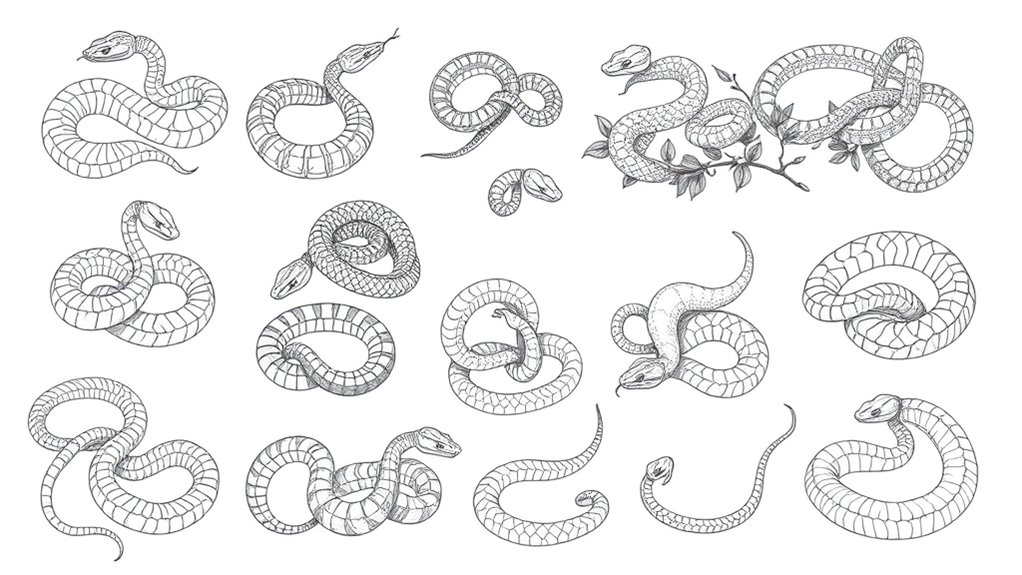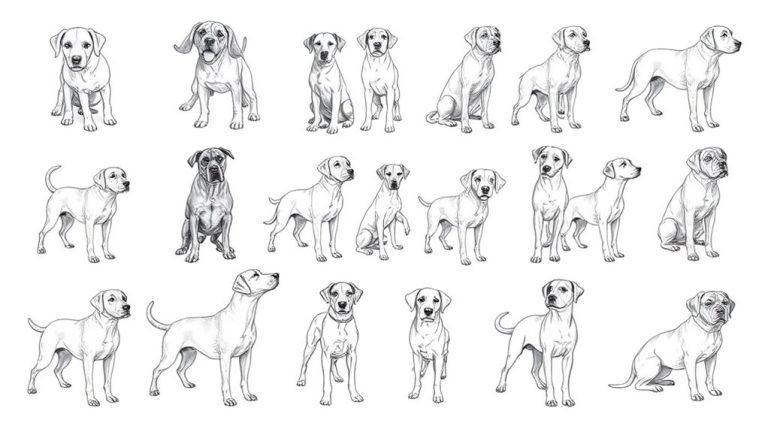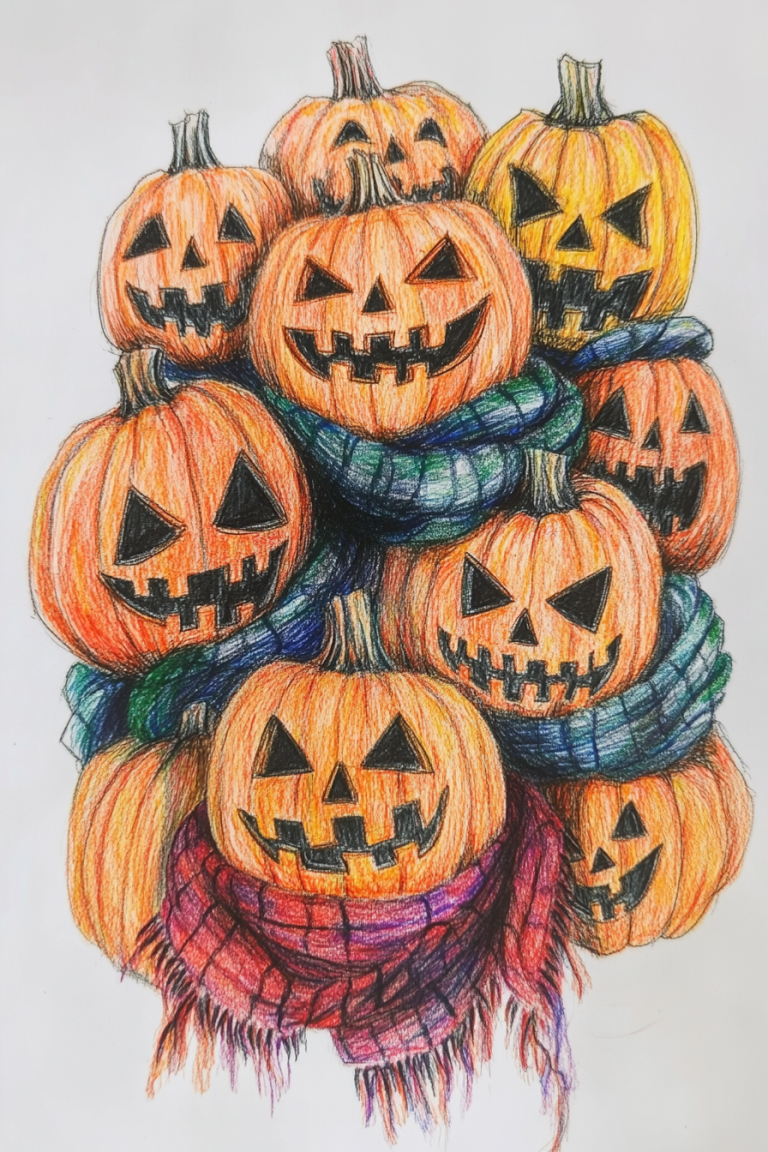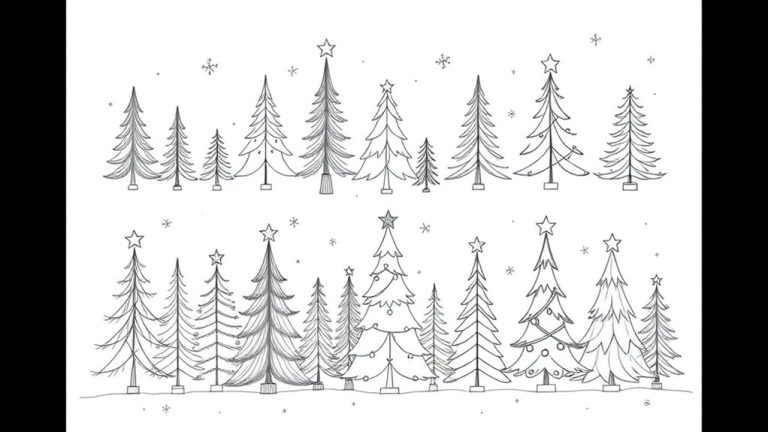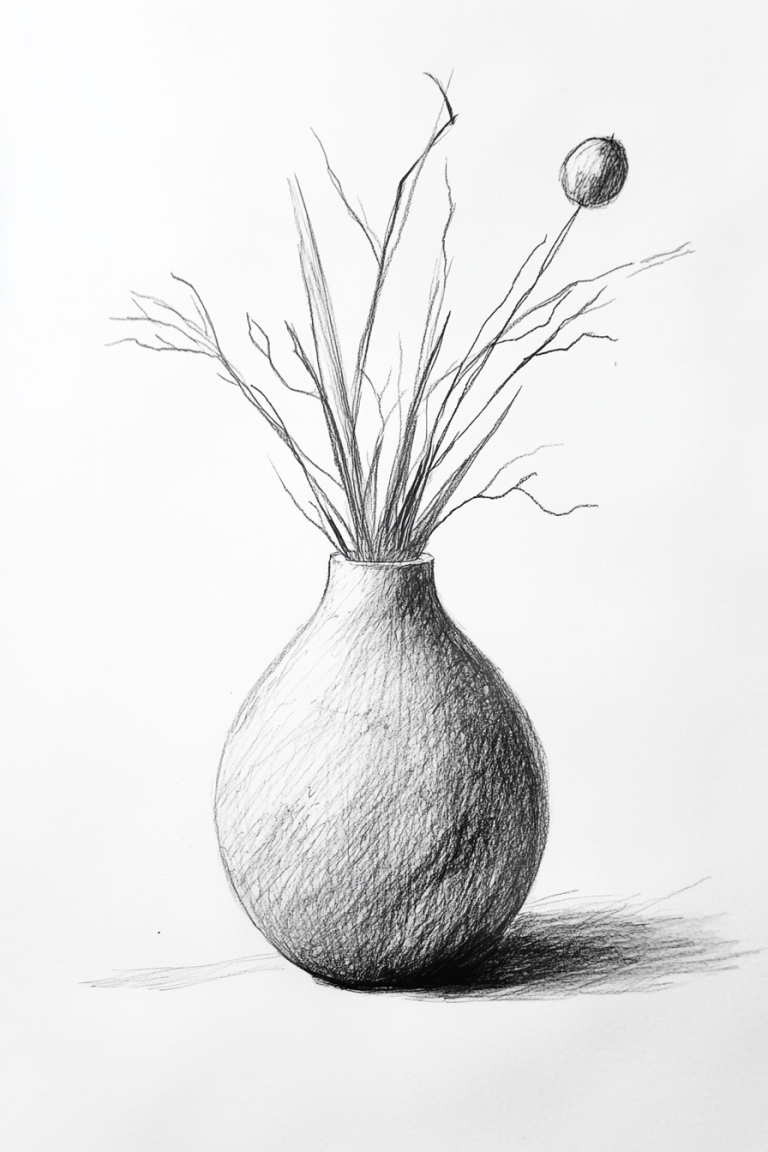19 Snake Drawing Ideas to Master Scales and Movement
If you’re looking to enhance your drawing skills, exploring snake art can be a unique challenge. Focusing on their scales and movement offers both technical and creative opportunities. Each idea presents a chance to capture the elegance and intricate details of these reptiles. From realistic settings to imaginative designs, there’s a wide range to contemplate. Let’s explore these concepts and see how they can elevate your artistic abilities.
The Essentials
- Capture the texture of snake scales with close-up drawings to study intricate patterns and light interactions for realism.
- Experiment with dynamic poses, such as mid-strike or slithering, to convey movement and grace in your snake illustrations.
- Incorporate natural habitats, like grass or branches, to enhance the snake’s beauty and create context in your artwork.
- Explore contrasting elements, such as snakes intertwined with flowers or in desert settings, to create visual narratives and depth.
- Design fantasy snakes with unique features, like wings or color-changing abilities, to spark creativity and imagination in your drawings.
Realistic Snake in a Natural Habitat
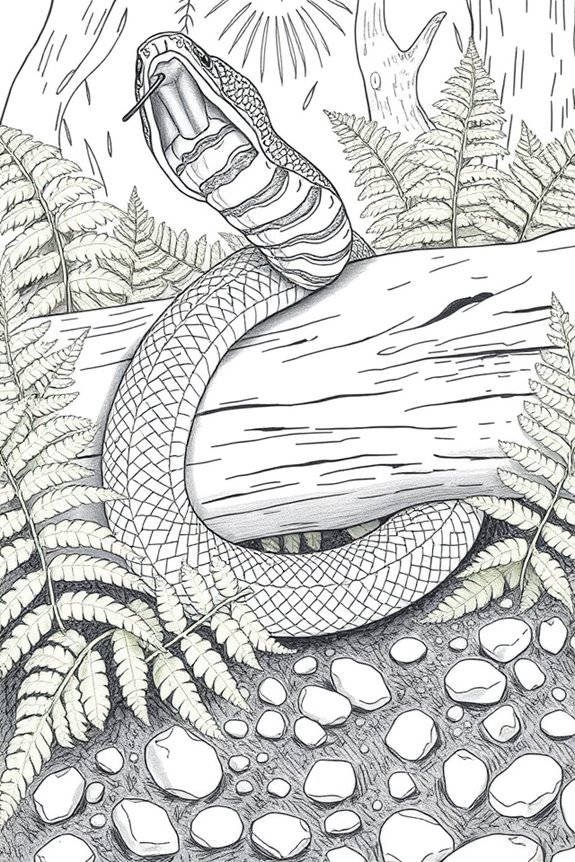
When you envision a realistic snake in its natural habitat, think about how its surroundings enhance its beauty and intrigue. The way it slithers through tall grass or coils around a tree branch adds depth to its character. Pay attention to the colors and textures around it; a vibrant green backdrop can make its scales pop. Consider the lighting too—how shadows play across its body creates a sense of movement. Observe the habitat’s elements, like rocks or water, which provide context. Capturing these details helps illustrate the snake’s connection to its environment, making your drawing more lifelike and engaging. Choosing the right drawing pad size can significantly impact your ability to capture these intricate details effectively.
Abstract Snake Patterns
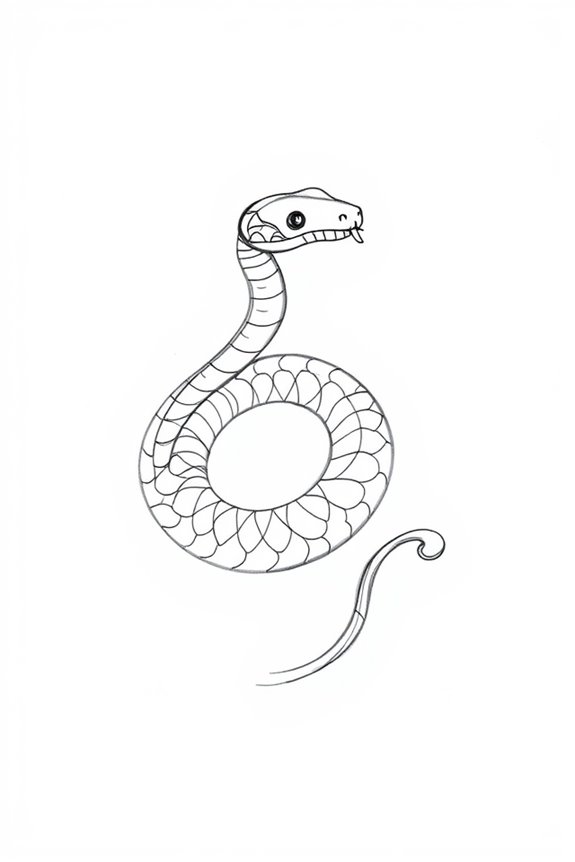
While you explore abstract snake patterns, let your imagination run wild with shapes and colors that evoke the essence of these fascinating creatures without being tied to realism. Experiment with swirling lines that mimic a snake’s movement, or create geometric shapes that represent scales. Use bold colors to express the snake’s energy or softer hues for a more tranquil vibe. Play with negative space to suggest the snake’s fluidity, and don’t hesitate to mix patterns—think stripes, polka dots, or even splatters. Your goal is to capture the spirit of snakes while embracing your artistic style and creativity. Consider incorporating various drawing pencil products to enhance the vibrancy and texture of your artwork.
Snake Coiled Around a Branch
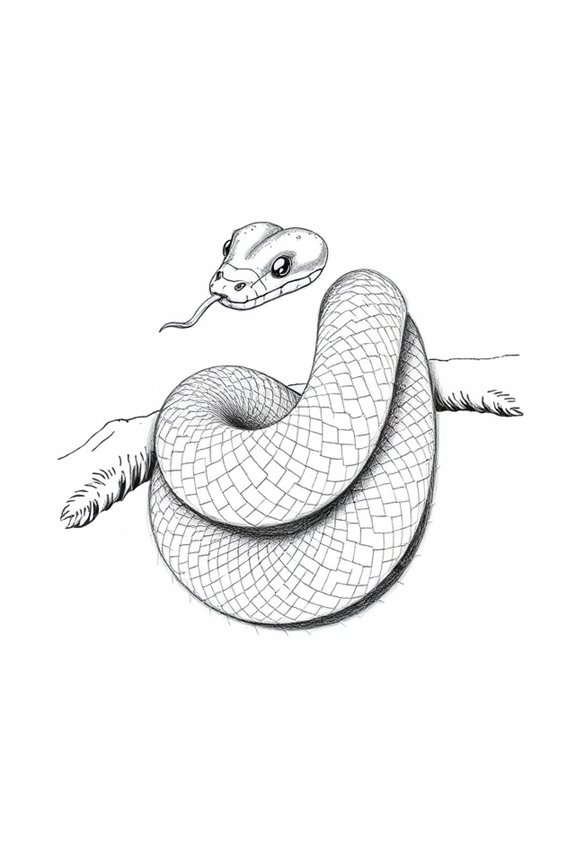
Exploring snake coiled around a branch opens up a world of dynamic compositions and natural beauty. When you sketch this scene, consider how the snake’s body wraps around the branch, showcasing its flexibility and grace. Pay attention to the curves and tension in its posture, as this adds life to your drawing. Incorporate the branch’s texture and surrounding foliage to create depth. Experiment with different angles, highlighting the snake’s unique patterns against the bark. Shadows and light can enhance the atmosphere, making your artwork feel more realistic. Let this subject inspire you to capture the harmony between the snake and its environment. Using essential drawing pencils can help you achieve the intricate details and shading necessary for this captivating scene.
Close-up of Snake Scales
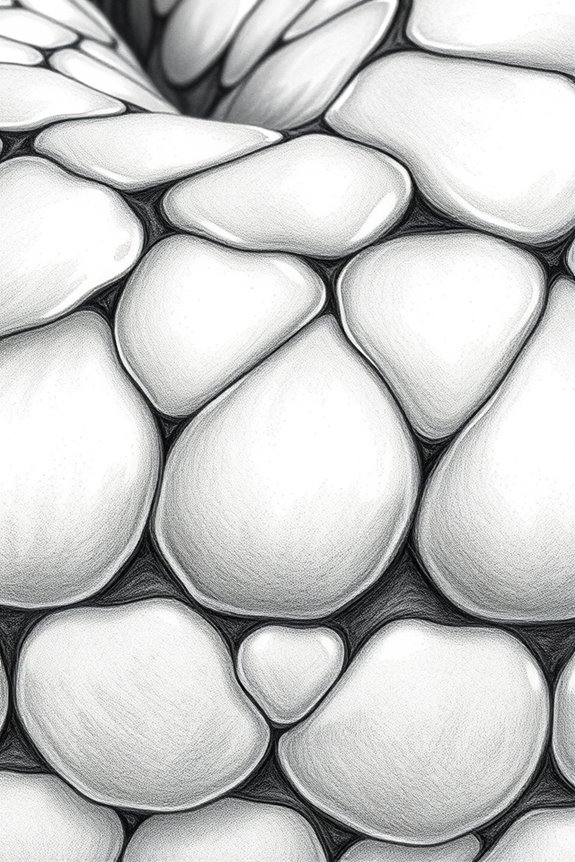
A close-up of snake scales reveals a fascinating world of texture and color that often goes unnoticed. Each scale’s unique pattern and sheen can inspire you to think about how light interacts with surfaces. Notice the intricate details, from smooth, glossy finishes to rougher, matte textures. Pay attention to the hues—rich greens, browns, or even vibrant yellows—adding depth to your drawing. Capturing these features can enhance your understanding of realism in your artwork. Don’t rush; take your time observing the subtle variations. With practice, you’ll master the art of depicting these mesmerizing scales, bringing your snake drawings to life. Using high-quality drawing pads for artists can significantly improve your experience as you work on these intricate details.
Snake Slithering Through Grass
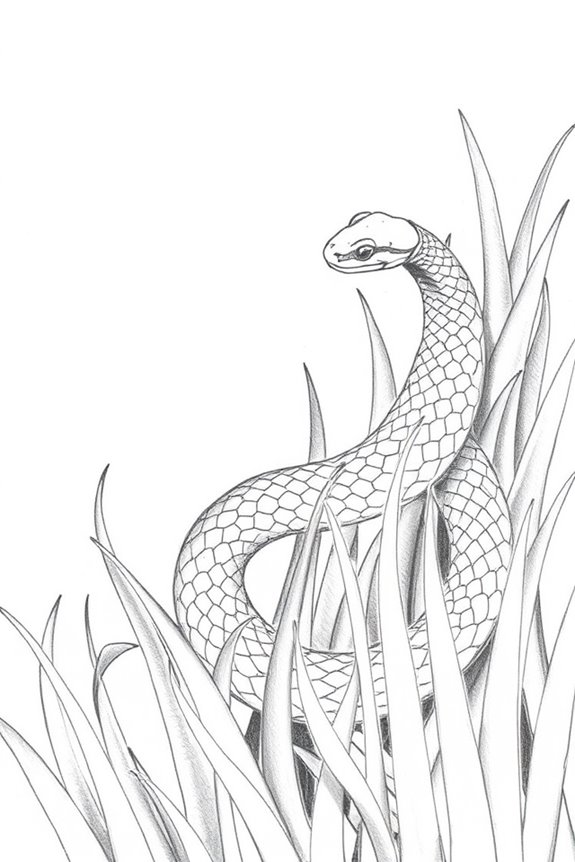
Watching a snake slither through grass can be a mesmerizing sight, as its sleek body moves with fluid grace. When drawing, focus on the way it weaves through blades, creating soft curves and gentle undulations. Pay attention to the contrast between the snake’s scales and the lush green grass, capturing light and shadow. Notice how the snake’s body narrows and expands, emphasizing its flexibility and strength. Incorporate subtle details, like the way the grass bends under its weight. By practicing these elements, you’ll create a more dynamic and lifelike representation of this enchanting creature in its natural habitat.
Cartoon Snake With Personality

Creating a cartoon snake with personality can be a fun and imaginative process. Start by thinking about its traits—will it be mischievous, friendly, or wise? Use exaggerated features like big eyes or a goofy grin to convey emotion. You could give it a unique pattern or a vibrant color scheme to stand out. Consider adding accessories, like a tiny hat or sunglasses, to amplify its character. Think about its posture too; a curled-up pose can suggest playfulness, while a straightened form might indicate confidence. Let your creativity flow and enjoy the journey of bringing your cartoon snake to life!
Snake Wrapped Around a Skull

While drawing a snake wrapped around a skull, you can capture an enchanting contrast between life and death. Start by sketching the skull, focusing on its contours and shadows to give it depth. Next, let the snake intertwine around the skull, ensuring its scales are textured and realistic. Play with the snake’s posture—perhaps it’s slithering or coiling tightly. Experiment with colors; the skull could be pale and weathered, while the snake might be vibrant, symbolizing liveliness. This juxtaposition creates a striking visual that tells a story about nature’s cycle. Don’t forget to add details like fangs or grass for realism.
Side Profile of a Snake
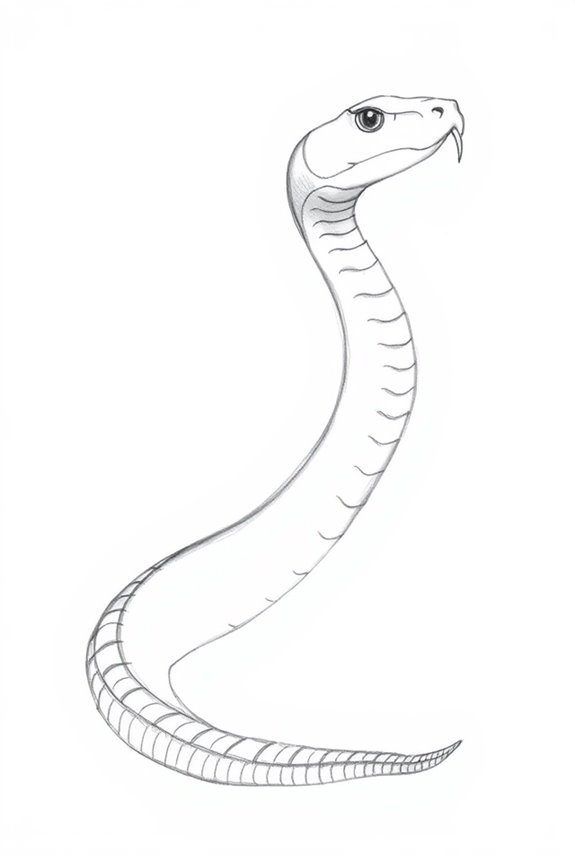
A mesmerizing side profile of a snake can showcase its elegant curves and intricate patterns. To draw this, start with a smooth, flowing line to represent the snake’s body. Pay attention to the head’s shape, ensuring you capture the distinctive features like the eyes and mouth. As you progress, focus on the scales; using varied shading techniques can bring depth and texture. Remember to depict the tail tapering off gracefully. This view highlights the snake’s natural movement, allowing you to practice fluidity and form. Embrace the challenge, and you’ll master the art of drawing snakes from this enchanting angle.
Snake in Mid-Strike Pose
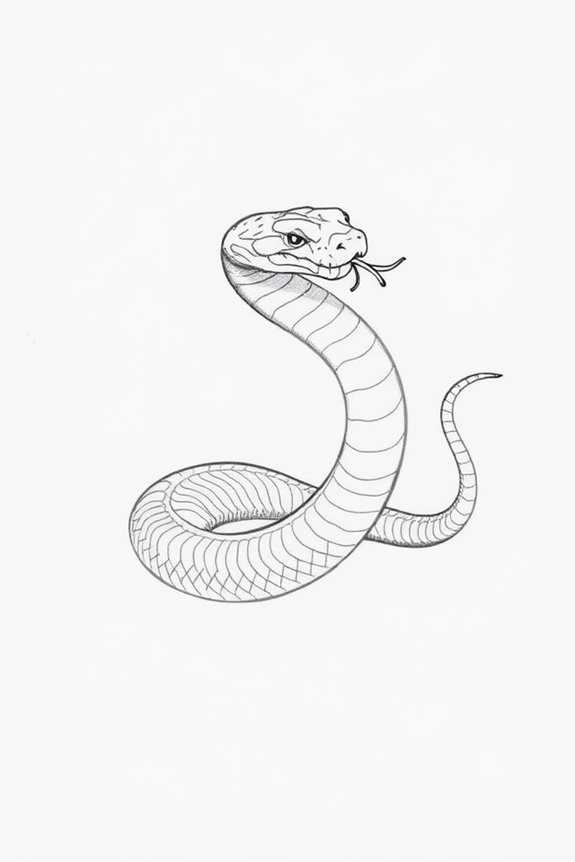
To capture the intensity of a snake in mid-strike pose, focus on the dynamic tension in its body. Imagine the coiled muscles and the way the head lunges forward, ready to strike. Begin with the elongated body, emphasizing the curves and bends that convey movement. Pay attention to the positioning of the mouth—open wide, revealing fangs. Highlight the eyes, which should reflect focus and determination. Use sharp, quick lines to suggest speed and agility. Capturing the balance between grace and ferocity will bring your drawing to life, showcasing the snake’s predatory nature in this powerful moment.
Snake With Geometric Designs

After capturing the fierce energy of a snake in mid-strike, exploring the aesthetic of a snake adorned with geometric designs offers a different artistic challenge. You can begin by sketching the snake’s body using flowing lines, then incorporate triangles, circles, or hexagons along its scales. Experiment with symmetry and patterns; consider alternating bold and subtle designs to create visual interest. Using contrasting colors can enhance the geometric elements, making them pop against the snake’s natural hues. This approach not only emphasizes the snake’s form but also invites viewers to appreciate the harmony between nature and abstraction in your artwork.
Snake Emerging From Water

Often seen as a symbol of transformation, a snake emerging from water creates a mesmerizing scene filled with life and movement. As you sketch this dynamic moment, focus on the rippling water and the snake’s smooth scales. Capture the way the water droplets glisten on its body, emphasizing its sleek form. The contrast between the snake’s vibrant colors and the serene blue of the water can add depth to your drawing. Pay attention to the snake’s posture; it should convey grace and fluidity as it rises. This composition offers a fantastic opportunity to practice movement and texture in your artwork.
Snake and Flower Composition
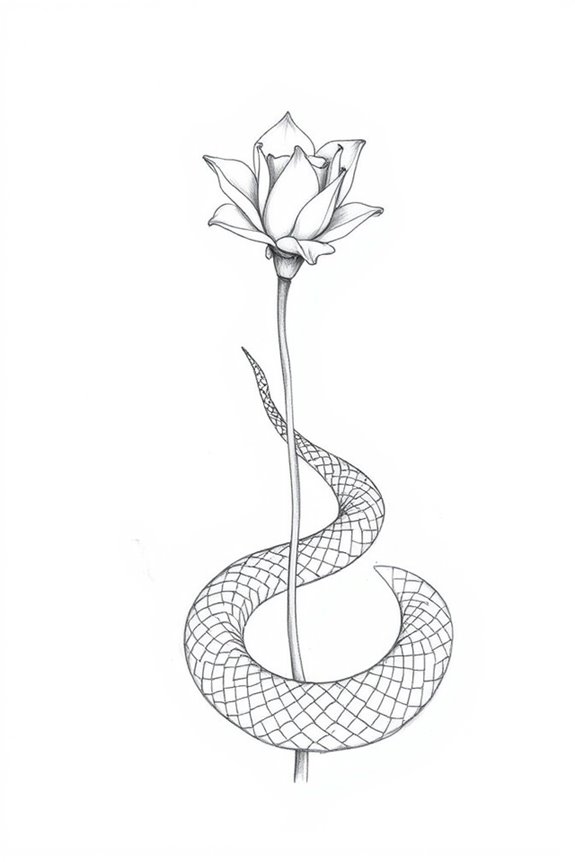
As you explore the enchanting combination of a snake and flowers, consider how their contrasting elements can create a striking visual narrative. Snakes symbolize transformation and mystery, while flowers represent beauty and life. Position the snake winding gracefully around the stems or nestled among the petals, emphasizing its scales against the softness of the blooms. Experiment with colors; vibrant flowers can enhance the snake’s natural tones. Pay attention to the movement; the snake’s curves can lead the viewer’s eye through the composition. This interplay of forms invites deeper storytelling, encouraging you to capture the harmony between the fierce and the delicate.
Snake in a Desert Scene

When you imagine a snake in a desert scene, think about how its sleek form contrasts with the rugged landscape. Visualize the sun casting sharp shadows, emphasizing the snake’s scales as it slithers over sun-baked sand. Consider the colors—rich browns and vibrant yellows—that mimic the surroundings while still allowing the snake to stand out. Pay attention to the movement; the way it weaves between scattered rocks and cacti adds dynamism. You could also depict a mirage shimmering in the distance, enhancing the atmosphere. Capturing this balance between elegance and harshness can create a striking composition.
Fantasy Snake With Unique Features
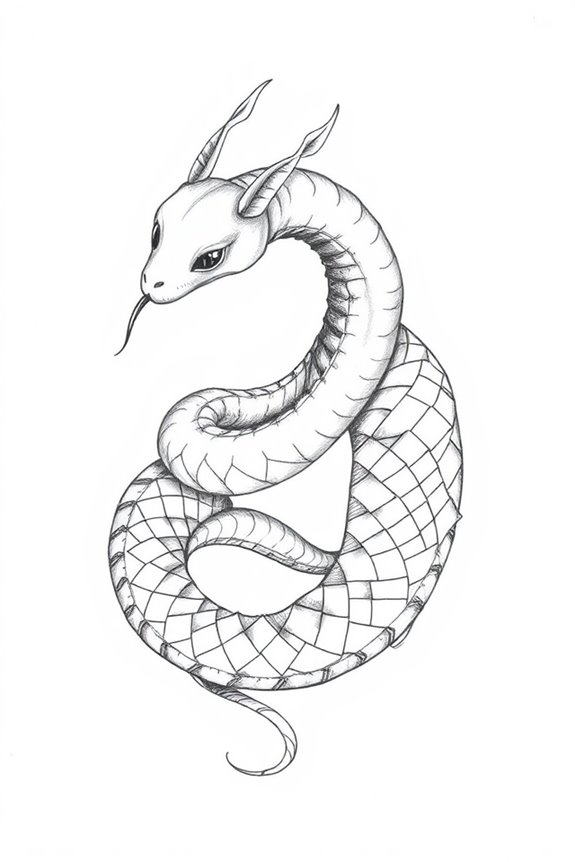
Imagine a snake that can breathe fire or one adorned with iridescent scales that shimmer like a rainbow. You could create a creature with wings, soaring gracefully through the skies, or one that changes colors like a chameleon, blending seamlessly into its surroundings. Think about adding extra eyes or unique patterns that tell a story. Maybe it has a long, serpent-like tail that transforms into various elements, like water or vines. As you sketch, let your imagination run wild, combining different features to craft your own fantasy snake. Remember, it’s all about capturing movement and the essence of magic in your design!
Snake Intertwined With Other Creatures
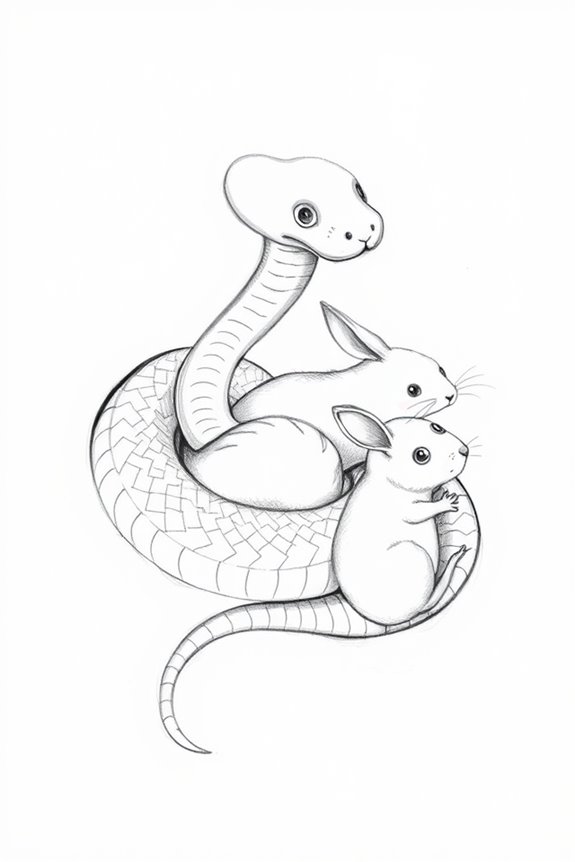
Snakes can create enchanting visuals when intertwined with other creatures, sparking a unique blend of characteristics and traits. Picture a snake coiling around a majestic eagle, its scales contrasting with the bird’s feathers. You could also experiment with a snake wrapped around a tree, merging with its branches, showcasing nature’s harmony. Consider adding a vibrant flower or a mystical fish, illustrating an underwater scene. These combinations not only enhance the snake’s form but also allow you to practice different textures and movements. Let your imagination run wild, and explore how these interactions can tell a fascinating story through your art.
Snake in a Mythological Context
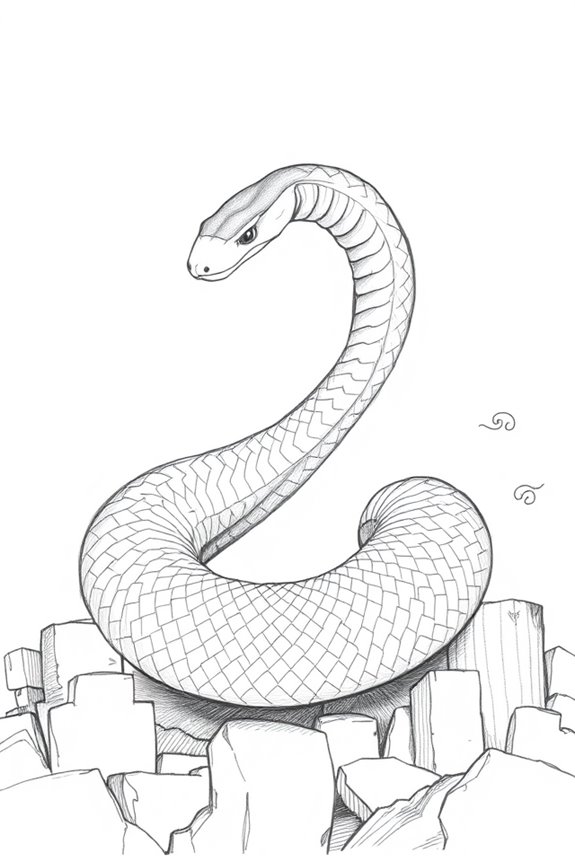
Throughout various mythologies, snakes often symbolize duality, embodying both creation and destruction. In some cultures, they represent wisdom and healing, like the serpent in healing traditions. Conversely, in others, they signify danger and chaos, as seen in the tale of the serpent in the Garden of Eden. When you draw snakes within these contexts, consider their roles in transformation and rebirth. Their sinuous forms can illustrate the tension between light and dark, life and death. By capturing these elements, you’ll deepen your understanding of their significance and enhance your artistic expression. Let their stories inspire your creativity!
Snake With Intricate Tribal Patterns
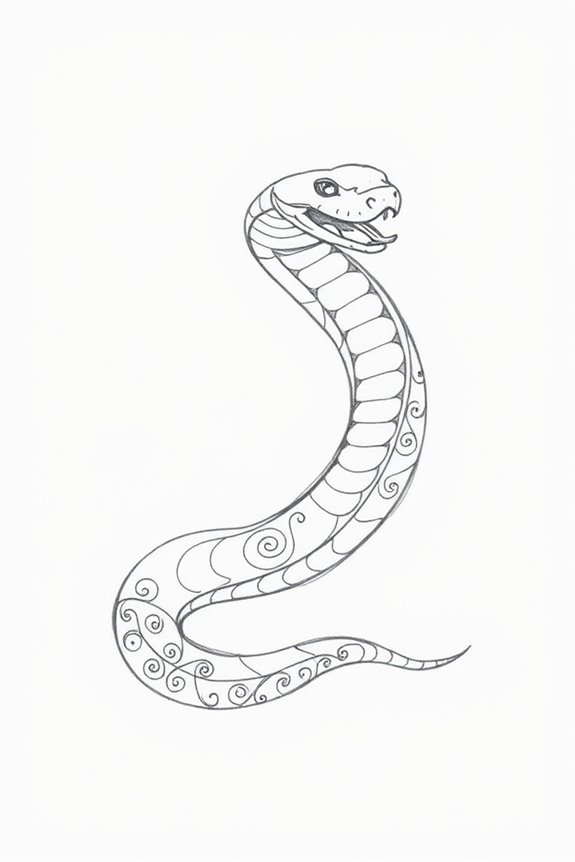
While exploring the beauty of snake illustrations, incorporating intricate tribal patterns can elevate your artwork to new heights. These patterns not only add depth but also tell a story, connecting your snake to various cultures and their symbolism. As you draw, consider how flowing lines and geometric shapes can enhance the serpent’s natural curves. Experiment with contrasting colors to make the patterns pop against the snake’s scales. Don’t hesitate to blend different styles—mixing traditional tribal designs can create a unique look. With practice, you’ll master the balance between the snake’s form and the complexity of the patterns.
Snake Against a Textured Background
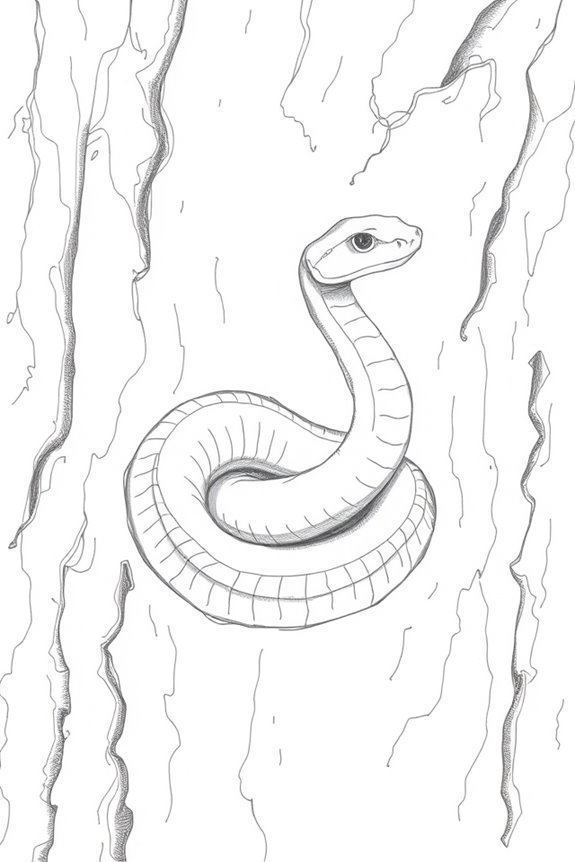
Creating an engaging snake illustration against a textured background can truly enhance the visual impact of your artwork. Consider using elements like rough stone, sandy terrain, or leafy foliage to add depth. These textures not only contrast beautifully with the smooth scales of your snake but also provide context for its environment. Experiment with colors that harmonize or contrast with your snake’s hues to make it pop. By layering these textures, you’ll create a more dynamic composition. Pay attention to light and shadow as they’ll give your background dimension, making your snake appear more lifelike and integrated into its surroundings.
Snake in Motion: Capturing Fluidity
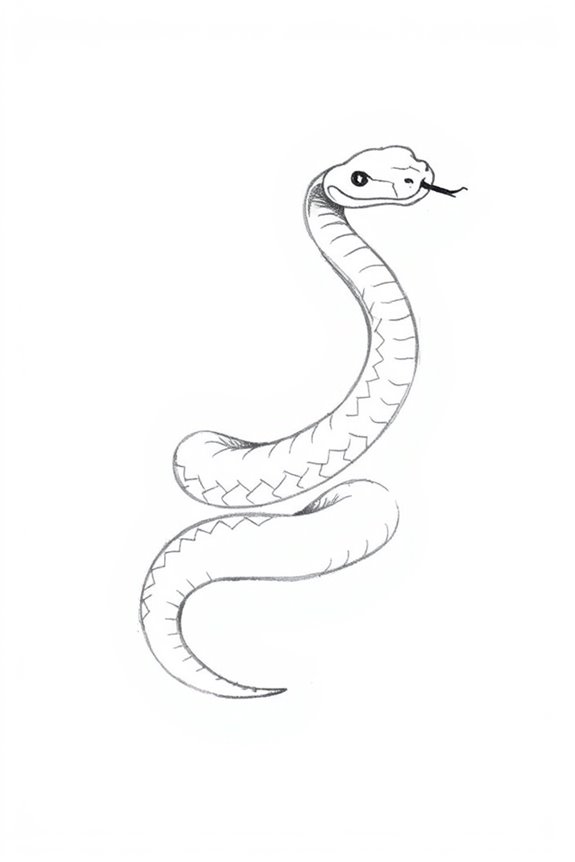
To capture the fluidity of a snake in motion, you’ll want to focus on the graceful curves and dynamic poses that characterize these fascinating creatures. Observe how they undulate, using their bodies to navigate through their environment. Start by sketching loose, flowing lines that convey movement. Pay attention to the way their scales catch light, creating a sense of depth and texture. Experiment with different angles and perspectives to showcase their agility. Don’t forget to include the surrounding elements that enhance the scene, like grass or branches, to ground your drawing in a more realistic setting. Enjoy the process!
Frequently Asked Questions
What Materials Are Best for Drawing Snakes Effectively?
For drawing snakes effectively, you’ll want quality pencils for detail, smooth paper for fluid lines, and vibrant colored pencils or markers to capture their scales. Don’t forget an eraser for corrections as you refine your work!
How Can I Improve My Snake Drawing Skills Quickly?
To improve your snake drawing skills quickly, practice regularly, study real snakes, and focus on their scales and movement. Use different materials and techniques to experiment, and don’t hesitate to seek feedback from others.
What Are Common Mistakes to Avoid When Drawing Snakes?
You should avoid overcomplicating the scales, neglecting body proportions, and failing to convey movement. Don’t forget to study real snakes for reference, and remember to practice regularly to refine your techniques and enhance your skills.
Are There Specific Techniques for Depicting Snake Movement?
To depict snake movement, focus on fluid curves and dynamic poses. Use lines that suggest motion, exaggerate body undulations, and incorporate varying widths to emphasize muscle tension. Practice observing real snakes to enhance your accuracy.
How Do I Choose the Right Reference Images for Snake Drawings?
To choose the right reference images for snake drawings, look for high-quality photos showcasing various angles, lighting, and textures. Focus on images that highlight their scales and movement, helping you capture realistic details effectively.

